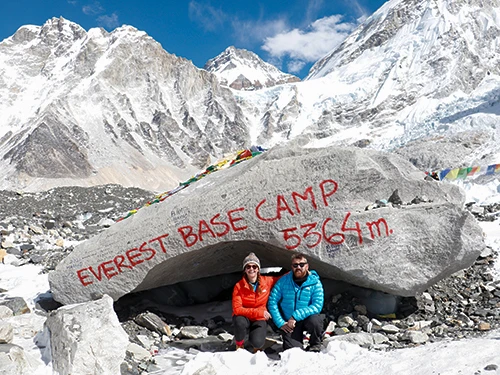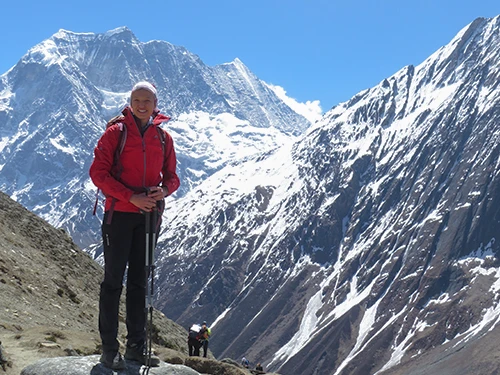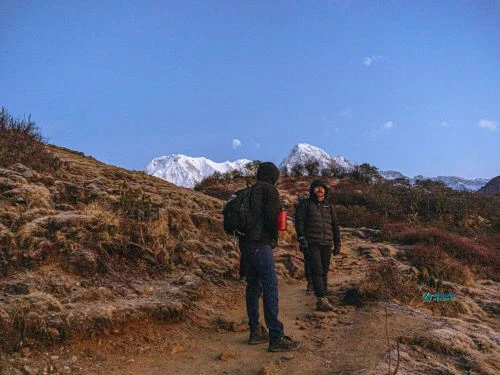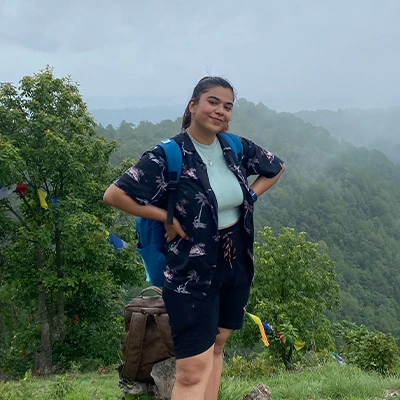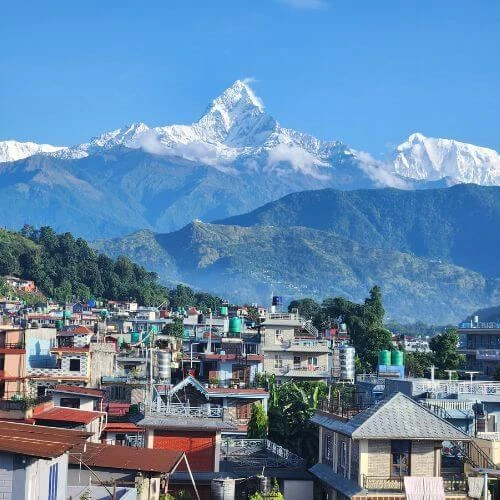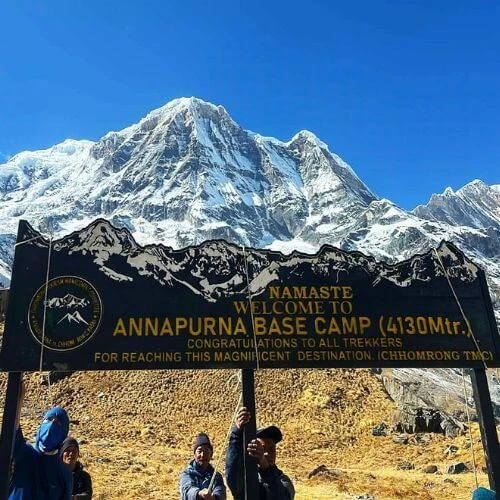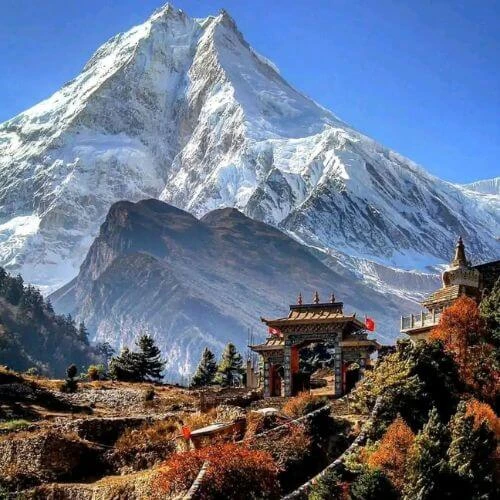Nepal’s beautiful Himalayas are an unforgettable adventure for trekking. It is filled with amazing views and unique experiences. But the mountains can be tough, with rough trails, changing weather, and high altitudes. That’s why having the right trekking gear is very important to stay safe and comfortable on your trek.
The mountains don’t care if you aren’t prepared, so having the right gear can make a big difference in how much you enjoy your trek. Many trekkers come unprepared or with the wrong equipment, which can cause problems like blisters or feeling too cold at high altitudes.
This guide will show you how to get good-quality gear without spending too much money, helping you have a safe and comfortable journey in Nepal’s amazing mountains. You will also learn where to buy or rent affordable gear in popular cities like Kathmandu and Pokhara.
Whether you are trekking for the first time to Everest Base Camp or are an experienced hiker on the Annapurna Circuit, this guide will give you helpful tips on how to pack smart and choose the right items for your trip.
Why Trekking Gear is Important in Nepal
Here’s something many travel blogs don’t say:
Nepal’s mountains are very tough. That beautiful Instagram photo of a sunrise over Everest? It was taken after a night when the temperature fell to minus 20°C. And the clear lake at Gokyo? You have to cross freezing cold mountain passes to reach it.
The Reality of Himalayan Trekking
When you're trekking in the Himalayas, you're not just going for a walk in the park. You're climbing to altitudes where the air has half the oxygen you're used to. Your body is working overtime, and the last thing you need is trekking gear failing on you.
Good equipment does three important things:
- Keeps you safe, like boots that stop ankle twists, warm sleeping bags to prevent hypothermia, and sunglasses that protect against snow blindness.
- Keeps you comfortable by preventing blisters and cold nights so you can enjoy the trek.
- Improves performance with light clothes that regulate temperature, trekking poles to ease knee stress, and backpacks that carry weight evenly.
Nepal vs Other Trekking Destinations
If you've trekked in Europe or the Americas, forget what you know. Nepal plays by different rules.
The weather changes fast like, really fast. You might start your day in sunshine, trek through rain by noon, and face snow by evening. The altitude gain is dramatic. Many trails take you from subtropical valleys to arctic conditions in just a few days.
You are often many days away from the nearest road. If your gear breaks, you can’t just go to a store. You have to use what you brought or can find in a small mountain village.
Ready to plan your trek? Contact our team for gear advice made just for your route and dates.
Trekking Gear List for Nepal
Alright, let's get practical. Here's what you actually need, broken down by category. I'm not going to list 50 items you'll never use. This is the real deal based on years of guiding treks.
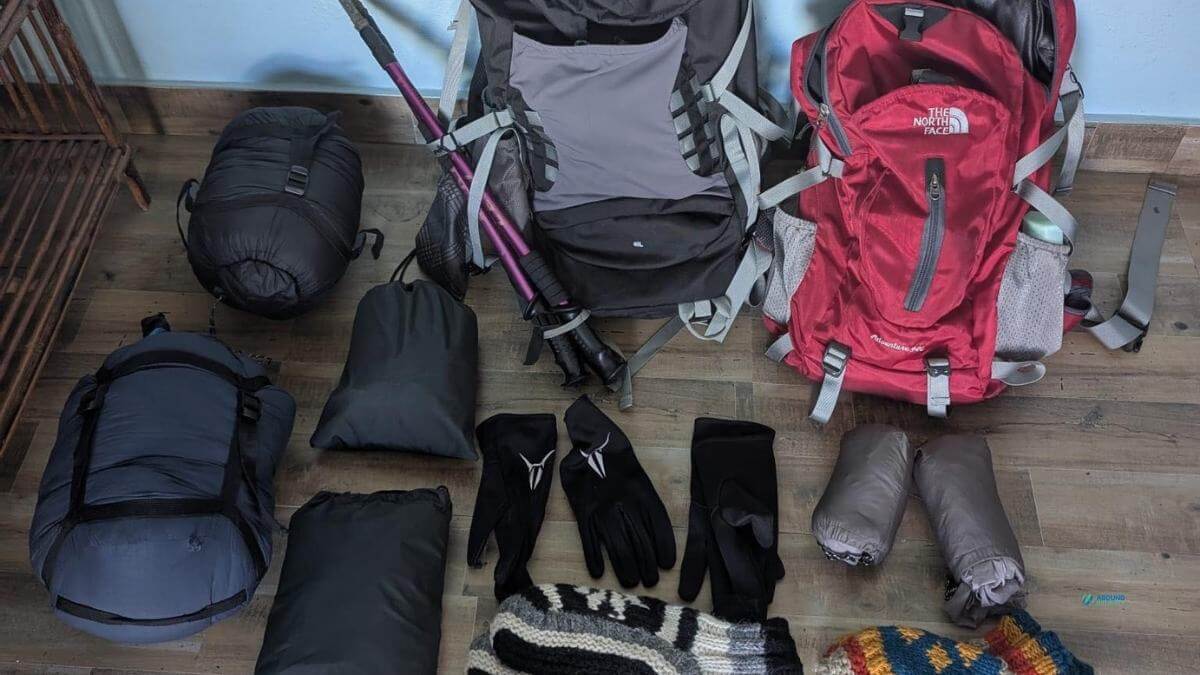
1. Upper Body
- Base Layer: 1 or 2 warm, quick-dry shirts (no cotton).
- Mid Layer: Fleece or down jacket to keep warm.
- Outer Shell: Waterproof and windproof jacket (must have).
- Casual Shirts: 2 or 3 t-shirts for warm places and evenings.
2. Upper Body
- Trekking Pants: 2 quick-dry pairs (convertible pants are great).
- Thermal Leggings: For cold nights or high places.
- Waterproof Pants: Rain pants to keep dry.
- Underwear: At least 4 pairs, moisture-wicking.
3. Footwear
- Hiking Boots: Water-resistant, broken-in boots, don’t wear new ones!
- Camp Shoes: Sandals or slip-ons to relax in.
- Socks: 4 to 6 pairs, wool or synthetic.
4. Head and Hands
- Warm Hat: Covers ears to save heat.
- Sun Hat: Wide-brim or cap for sun.
- Buff/Neck Gaiter: For sun, dust, and warmth.
- Gloves: Light gloves for trekking, warm gloves for cold mornings.
- Sunglasses: UV protection for high altitude.
5. Sleeping Gear
- Sleeping Bag: Good to -10°C or colder for high/winter treks.
- Sleeping Bag Liner: Adds warmth and keeps bag clean.
6. Bags and Packs
- Main Backpack: 50-70L if carrying all gear; 30-40L if using porters.
- Daypack: Small 15-20L pack for day trips.
- Dry Bags: Waterproof bags to keep things dry.
7. Tools and Equipment
- Trekking Poles: Help on descents and rough paths.
- Headlamp: With spare batteries for night or low light.
- Water Bottles: At least 2 liters, insulated to stop freezing.
- Water Purifier: Tablets or filter to clean water.
8. Health and Safety
- First Aid Kit: Blister pads, pain meds, altitude medicine.
- Sunscreen: High SPF to protect skin.
- Lip Balm: With sunscreen.
- Toiletries: Toothbrush, toothpaste, soap, toilet paper, hand sanitizer.
- Medications: Personal meds and Diamox for altitude sickness.
9. Extras and Documents
- Phone/Camera: Bring charger or power bank (solar chargers useful).
- Plug Adapter: For Nepal’s power plugs (Type C, D, M).
- Permits: Keep copies in a waterproof bag.
- Cash: Nepali rupees for tips, snacks, or emergencies.
Not sure what gear you need? Get your free personalized trekking checklist from our experts.
Where to Buy Trekking Gear in Nepal
Here's where Nepal surprises most people: you can actually get fantastic trekking gear in Nepal without shipping everything from home. The question isn't whether you should buy here it's knowing where to look and what to watch for.
Expert Tip: Always test your rented sleeping bag in the shop. If the zipper or insulation feels weak, ask for a replacement nights in the Himalayas are no joke!
Trekking Gear Shops in Kathmandu & Thamel
Thamel is the main area for trekking gear in Kathmandu, with many shops selling everything from fake to genuine international brands.
Main Shopping Streets:
- Tridevi Marga: Official stores for brands like The North Face and Mountain Hardwear. Authentic but pricier gear.
- Saat Ghumti Marg: Shops like Wild Everest offer affordable rentals of trekking poles, down jackets, and backpacks.
- Jyatha, Thamel: Stores like Samden Sherpa sell gear and provide repair services.
Local vs International Brands:
Many jackets labeled "North Face" here are knockoffs. Nepal also has good local brands like Everest Outfit and Lukla Outdoors, which offer quality gear at mid-range prices.
Recommended Shops:
- You can buy, sell, rent the gears all in one place here at Himalaya Gears
- Kalapathar Trekking Store have some of the most budget-friendly rentals for fleece and rain covers
- Outdoor Nepal offers mix of local and international branded equipments
- Sherpa Adventure Gear is filled with quality Nepali-made equipment in their arsenal
Pro tip: Always visit multiple shops before buying. Prices can vary by 20-30% for the same item. Use that to your advantage when negotiating.
Trekking Gear Shops in Pokhara
Pokhara is the second most popular destination for buying trekking gear at cheap price in Nepal, especially if you're trekking into the Annapurna region. The Lakeside area has dozens of shops catering to trekkers. While the selection isn't as extensive as Thamel, you'll find everything you need for Annapurna Circuit or Annapurna Base Camp treks.
What is the advantage of shopping in Pokhara? Less tourist chaos, slightly better prices, and the chance to buy items you forgot in Kathmandu before heading into the mountains. Many shops near Lakeside also offer rental services with flexible return policies you can rent gear for your trek and return it when you finish, even if that's weeks later.
Renting vs Buying Trekking Gear
This is the million-dollar question, isn't it? The answer depends on your situation.
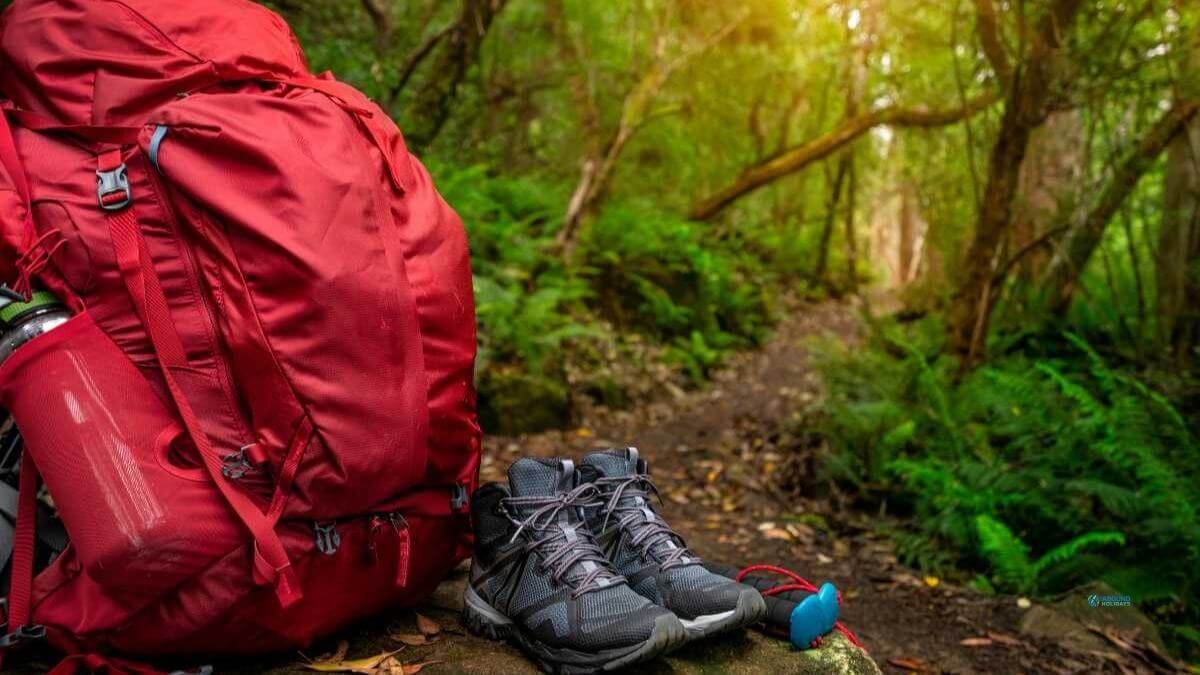
When Renting Makes Sense:
- Doing just one trek? Renting expensive items like down jackets and sleeping bags (about $1.50/day) saves money.
- Flying with limited luggage? Renting avoids high baggage fees.
- Not sure about fit? Renting lets you try boots or backpacks before buying.
When Buying Is Better:
- Planning multiple treks? Buying gear is cheaper over time.
- Need special features or a perfect fit? Buying gives more choice.
- Trek at home too? Gear bought in Nepal works anywhere.
Tips for Bargaining:
- Start offering about 60% of the price for non-branded items.
- Buy several items together to get discounts.
- Paying cash can lower prices by another 5-10%.
- Always be polite. Shop owners rely on fair deals.
Planning a longer trek and need rental recommendations?Get our rental price comparison sheet with verified shops and current rates.
Trekking Gear Prices in Nepal
Trekking gear prices in Nepal are usually 20-40% cheaper than Western countries for similar quality, except very high-end gear which can be more expensive due to taxes.
Here are prices to help you budget:
Item | Price Range (USD) | Notes |
Down jacket (rental for 2 weeks) | $15 - $25 | You just borrow it for a short time |
Fake down jacket | $30 - $50 | Not good quality, better to skip it |
Real brand down jacket | $150 - $300 | Super good quality and lasts a long time |
Waterproof pants (local) | $20 - $40 | Cheap and still pretty good |
Waterproof pants (international) | $60 - $120 | Better quality for what you pay |
Thermal base layers | $15 - $30 | Keeps you warm and dry |
Trekking pants | $25 - $50 | Strong and dries fast |
Hiking boots (local) | $50 - $80 | Okay quality |
Hiking boots (international) | $120 - $250 | Better made and lasts longer |
Trekking socks (per pair) | $5 - $10 | Wool or fake wool ones |
Sleeping bag (rental for 2 weeks) | $15 - $30 | Fine for short trips |
Sleeping bag (buy) | $80 - $200 | Worth it if you trek often |
Backpack (60L) | $50 - $150 | Big enough to hold all your stuff |
Trekking poles | $15 - $80 | Helps you walk on rough paths |
Headlamp | $10 - $25 | For night or low light use |
Sunglasses | $15 - $50 | For UV protection |
Gloves | $10 - $25 | Warm or light |
Hat / Beanie | $5 - $15 | Keeps head warm |
Water bottle | $8 - $20 | Stay hydrated |
Tips to get good deals:
- You can shop during the off-season (monsoon, June-August, winter, January-February) for better discounts
- Look for sales in September and March when shops clear old stock
- Buy from 2-3 different shops to compare prices and find the best deal
- Always check rental gear for any damage before paying
Never wear new boots on the trek; always break them in first.
Don’t overpack. Every kilo counts above 3,000 meters.
Recommended Trekking Gear for Popular Routes
Not all treks are the same. What’s good for a warm spring trek to Poon Hill won’t keep you warm at Everest Base Camp in cold November. Let’s look at what gear you need for different routes.
Everest Base Camp Trek Gear List
Everest Base Camp is very high and cold, so your EBC gear must handle large temperature changes and altitude. Days can be around 15°C lower down, but nights at high camps drop to -15°C or colder. Wind chill can feel like -25°C.
You should carry these gears:
- Sleeping Bag: Use a four-season sleeping bag rated for -15°C to -20°C. Blankets at teahouses are not enough.
- Gloves: Bring thin liner gloves and warm thick gloves or mittens for hands above 4,500 meters.
- Down Pants: Wear insulated pants to stay warm when resting at high camps.
- Face Protection: Use a face mask or balaclava to protect against wind in cold, exposed areas.
- Extra Layers: Carry extra fleece or insulated clothes for extra warmth.
- Trekking Poles: Metal tips are good for rocky trails; use rubber tips to be quieter in villages.
- Power Bank: Bring a big power bank (20,000 mAh or more) because charging is limited.
- Altitude Medicine: Carry Diamox or others for altitude sickness.
Annapurna Circuit & Base Camp Trek Gear List
The Annapurna trek covers many climates from hot forests to cold mountain passes and rainy seasons. Weather changes a lot: You may start in 30°C heat, cross Thorong La pass at -10°C, and end in milder weather, all in one week.
- Light rain jacket: Must be waterproof and breathable because rain showers are common, especially before and during monsoon.
- Breathable clothes: Lower areas are hot and sweaty, so wear moisture-wicking clothes to stay dry and comfortable.
- Good trekking poles: The long, steep descents are hard on the knees. Poles with shock absorbers help.
- Microspikes or crampons: Needed if trekking from October to April because the high pass often has ice and snow.
- Gaiters: Help keep dust and snow out of your boots on dusty or snowy sections.
- Easy layering: Bring layers that you can put on or take off quickly because temperatures change a lot.
Manaslu & Upper Mustang Trek Gear List
These treks are remote, rugged, and far from towns, so gear needs are special:
- Sturdy, high-ankle boots: Trails are rocky and tough, so strong boots with good ankle support are needed.
- Extra batteries/solar chargers: Power is scarce; bring solar chargers or several power banks.
- Windproof jacket: Upper Mustang is very windy. A good windproof shell is more important than super warm clothes.
- Dust protection: Use a buff, sunglasses, and sometimes a dust mask because it's dusty in Upper Mustang.
- Full first aid kit: You’re far from help, so carry more medical supplies.
- Reliable water filter: Water sources are rare and not always clean.
- Navigation tools: GPS or offline maps help since these trails are less marked.
Want a custom gear list for your specific trek dates and fitness level? Chat with our trekking experts who've completed these routes dozens of times.
Trekking Gear Brands in Nepal
Let's talk brands, both the ones worth trusting and where to find them.
International Brands in Nepal
The North Face: Trusted brand with real products and a warranty.
Location: Tridevi Sadak, Thamel, Kathmandu
Contact: +97701-4545101
What to buy: Down jackets, sleeping bags, technical layers
Price: High-end
Mountain Hardwear: Known for strong gear for tough conditions.
Location: Tridevi Marga, Thamel, Kathmandu
Contact: +97701-4511800
Best for: Insulated jackets, waterproof jackets, trekking pants
Black Yak
Location: Tridevi Sadak, Kathmandu, outdoor shops
Best for: Technical outerwear and trekking clothing
Marmot:
Availability: Carried in major Himalayan gear shops around Kathmandu and Pokhara (no exclusive branch).
Contact: 01-4516116
Best for: Tents, sleeping bags, technical mid-layers
Nepali Brands You Can Trust
Sherpa Adventure Gear: Nepal’s top local brand with good quality and fair prices.
Location: Several shops in Thamel
Contact: +977 9823383447
Specializes in: Affordable trekking clothes and backpacks
Everest Outfit: Local brand offering good, budget-friendly gear for Himalayan conditions.
Price: Mid-range
Contact: +9779802303555
Lukla Outdoors: Started in Lukla, now in Kathmandu with durable gear tested on the trails.
Location: Multiple stores in Kathmandu
Contact: +9779808573463
Shona's Alpine: Offers a variety of trekking gear and down sleeping bags.
Location: Amrit Marg, Kathmandu
Contact: +9779841273446
Kalapatthar Trekking Store: A local retailer located in the Thamel area.
Location: Thamel, New Road
Contact: +9779841263414
Red Fox Nepal: A Nepali brand with a dedicated store located in Kathmandu.
Location: Budhanilkantha, Kathmandu, Nepal
Contact: +977 9818187313
Doplo Gears: Local trekking gear brand
Location: Amrit Marg, Kathmandu, Nepal 44600
Contact: +97701-5360937
Aaron Nepal: Nepali outdoor brand
Location: KC Complex, Second Floor, Kathmandu
Contact: +977 9802336305
Dawa Gear: Nepali trekking equipment brand
Location: Saraswatinagar Rd, Kathmandu
Contact: +9779860098973
Nimsdai Store: Nepali outdoor gear brand
Location: Naagpokhari Inside Kathmandu Marriott Hotel, Manakamana Marg, Kathmandu
Contact: +9779801315760
Wild Yak Gear: Another local trekking gear brand
Location: Thamel Rd, Kathmandu/ Bouddha
Sonam Gear: Nepali trekking equipment brand
Location: Thamel Marg, Kathmandu
Contact: +97701-4268923
Nirvana Gear: Trekking gear products made in Nepal
Location: Thamel, Kathmandu
Contact: +977 9851167354, 9841357354, 9851020594
Makalu E Traders: Offers top trekking brands and local gear in Kathmandu
Location: Bagawan Bahal Marg, Kathmandu
Contact: +9779851167354
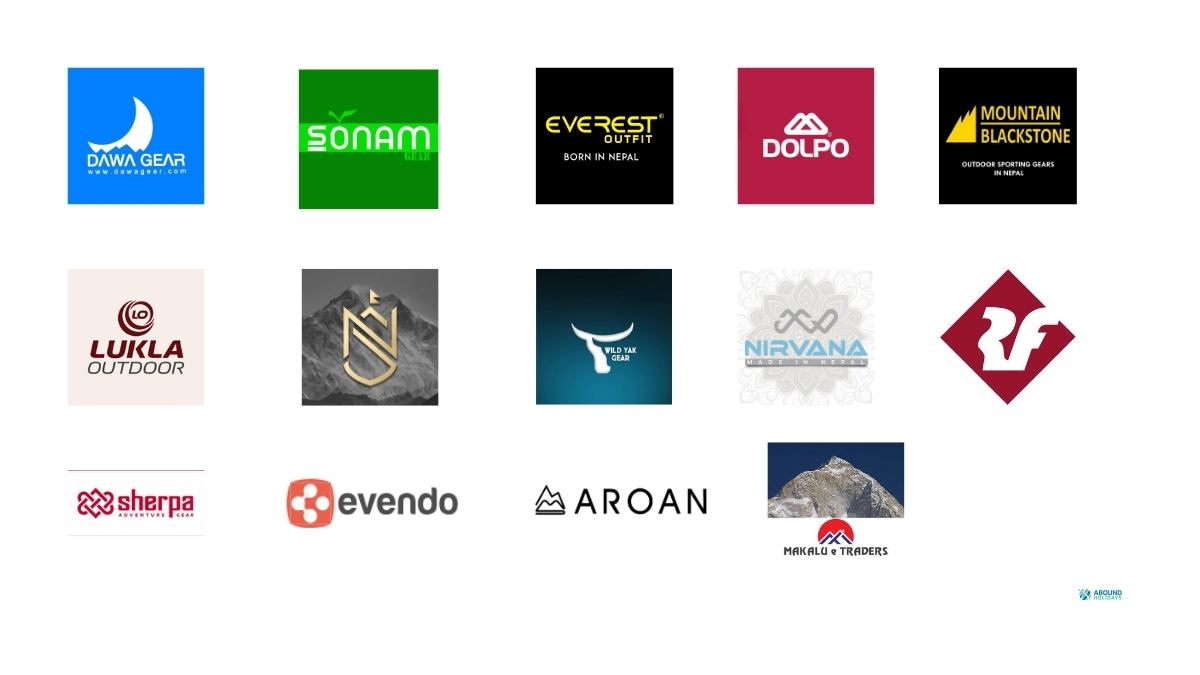
Watch Out for Fake Gear
- Fake gear is common in Thamel; cheap jackets for $30 are usually fake.
- Fake gear might be okay for easy treks, but NOT for important items like sleeping bags, boots, and rain jackets.
Tips to spot fakes: Poor stitches, wrong tags, cheap zippers (real gear uses YKK zippers), and prices too low for real brands. Buy from official stores with receipts and warranties.
Tips for Choosing the Right Trekking Gear in Nepal
After years of seeing trekkers succeed and struggle, here are the lessons that matter most.
Pack Light:
Carry no more than 10-15 kg yourself, or 8-10 kg if using porters. Every extra kilo makes trekking harder at high altitude. Only bring items you’ll use at least five times. Rewear clothes and use travel-size items to save weight.Invest in the Big Three:
- Boots: Comfortable, quality boots prevent blisters. Budget $100-150.
- Jacket: A good jacket protects from wind and rain. Budget $80-150.
- Sleeping Bag: A warm sleeping bag helps you rest well. Buy for $80-120 or rent for $20-30.
- Other gear can be mid-range or budget, but these three are essential.
Go Green:
Use reusable items like water filters instead of plastic bottles. Support eco-friendly brands and buy durable gear to reduce waste. Always carry out all trash and protect nature.Avoid Last-Minute Shopping:
Arrive 2-3 days early in Kathmandu to shop calmly. This lets you try on gear, compare prices, break in boots, and find missing items. Last-minute shopping means higher prices and fewer choices.- Test Gear Before Trekking:
- Walk with your boots for a day to check comfort.
- Test your rain jacket and pants for waterproofing.
- Check all zippers carefully.
- Try out your sleeping bag at your hotel.
- Wear your loaded backpack around to adjust fit and weight.
Ready to make smart gear decisions? Book a gear consultation with Abound Holidays kathmandu team before your trek.
Summing Up
Finding the right trekking gear in Nepal can completely change your experience, whether you buy from Thamel, rent in Pokhara, or bring it from home. What matters most is knowing what you really need for your trek.
Focus on good boots, warm jackets, and a good sleeping bag. Pack light, but don’t forget important items. Take your time to shop wisely, compare prices, and test your gear before you start. The mountains will test you, but with the right gear and mindset, your trek will be one of the best experiences of your life.
Start Your Trek Smart. Talk to our local gear experts in Kathmandu and get a custom packing list and shop recommendations for your route.
Message us for the latest trekking gear prices in Thamel and Lakeside Pokhara. [Contact Us Now]
FAQs
1. Can I rent trekking gear in Nepal?
Yes, you can rent gear like sleeping bags, poles, and jackets in Kathmandu and Pokhara. Shops and guesthouses offer cheap daily or weekly rates, so you skip the extra packing hassle.
2. How much does trekking gear cost in Nepal?
Rentals run $1-5 a day for basics like bags or poles, while buying stuff like boots or packs costs $10-50. It's much cheaper than in other countries, especially in tourist spots.
3. Is it better to buy trekking gear in Nepal or bring it from home?
It depends on your needs, but buying in Nepal is often better for heavy or bulky items like sleeping bags since it's cheaper and lighter to travel without them. Bringing high-quality personal gear from home ensures a perfect fit and durability, especially for serious trekkers. Renting is a good middle ground if you're unsure.
4. Where are the best trekking gear shops in Nepal?
The best shops are in Kathmandu's Thamel district, where you'll find a huge selection of gear from rentals to sales. Pokhara's Lakeside area is great for Annapurna treks, with many outfitters nearby. Look for well-reviewed stores to avoid fakes and get good advice.
5. What’s the most important trekking gear for Everest Base Camp?
Focus on warm layers like a down jacket and thermals, plus waterproof boots and a -10°C sleeping bag. Add trekking poles and a water purifier to stay safe on the high trail.
6. Do I need special trekking gear for Nepal?
You need warm, layered clothes and rain gear for high altitudes and changing weather, but it's mostly basic hiking stuff. Pack sun protection too, since UV is strong up there.
7. Can I buy original trekking gear in Kathmandu?
Yes, Thamel shops sell real brands like North Face or Patagonia, mixed with fakes. Check labels and reviews to get the genuine ones at lower prices.
8. Is trekking gear in Nepal cheaper than abroad?
Yes, trekking gear in Nepal is much cheaper than abroad, often 30-70% less for similar quality items due to local markets and imports. You'll save on rentals too, making it ideal for budget travelers. Just be cautious of counterfeit products that might not last.
9. Can I rent trekking poles and sleeping bags in Nepal?
Yes, you can rent poles and bags for $1-3 a day at shops in Kathmandu or Pokhara. They're clean and easy, helping you pack lighter.
10. What is the average trekking gear weight for Nepal treks?
The average trekking gear weight for Nepal treks is about 10-15 kg total, including your backpack, clothes, and essentials, to keep it manageable on long hikes. Aim for lightweight items to stay under the limit, especially for teahouse treks where you don't carry food. Porters can help if it's too heavy.
11. Which is better for trekking gear in Nepal: buying or renting?
Renting is often better for short trips or first-timers, as it's cheap and lets you test gear without commitment. Buying makes sense for frequent trekkers who want personalized, high-quality items that last. Consider your budget and how often you'll use it - many mix both for the best setup.
12. Can I find trekking gear in Pokhara?
Yes, Pokhara has plenty of trekking gear shops around Lakeside, perfect for Annapurna or other local treks. You'll find rentals and sales for everything from boots to tents at good prices. It's convenient if you're starting your adventure from there.
13. What brands of trekking gear are most popular in Nepal?
The North Face, Columbia, and Quechua are top picks for their toughness and easy access. Local options like Mountain Equipment and Black Yak are affordable favorites too.
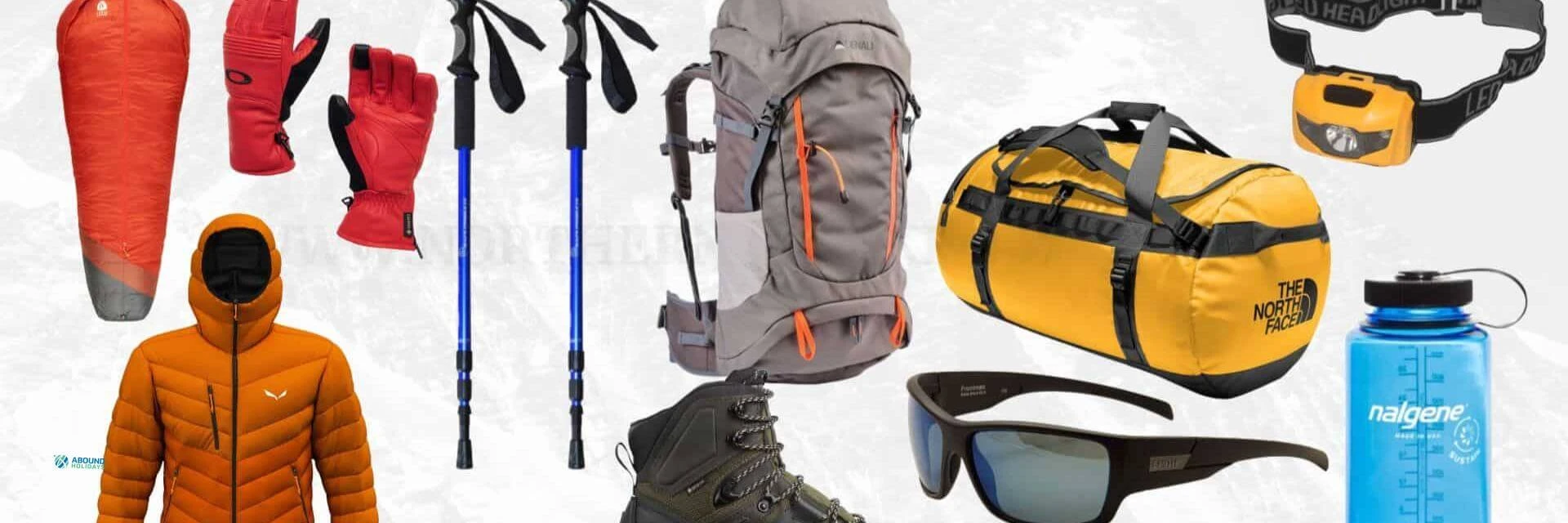
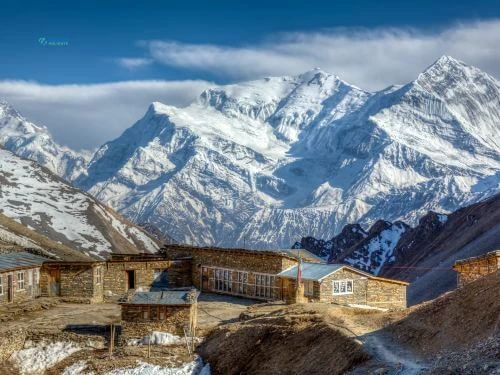
 based on 5 reviews
based on 5 reviews